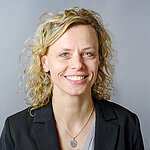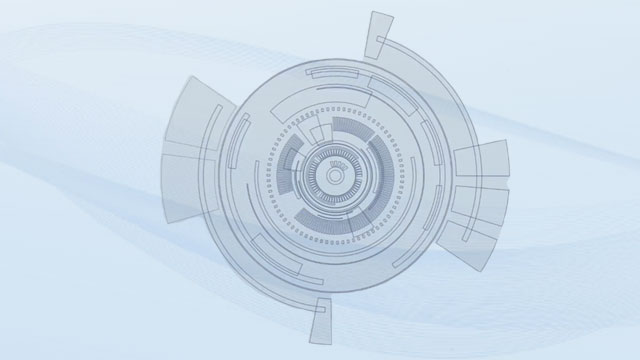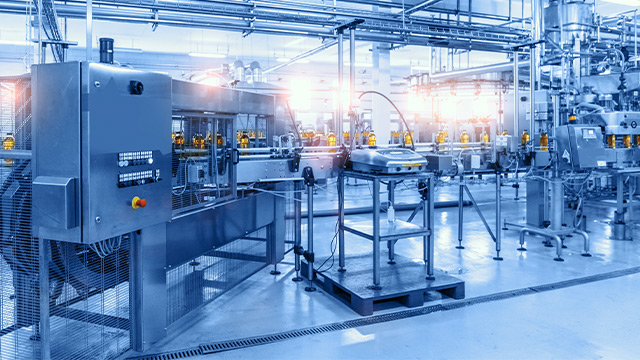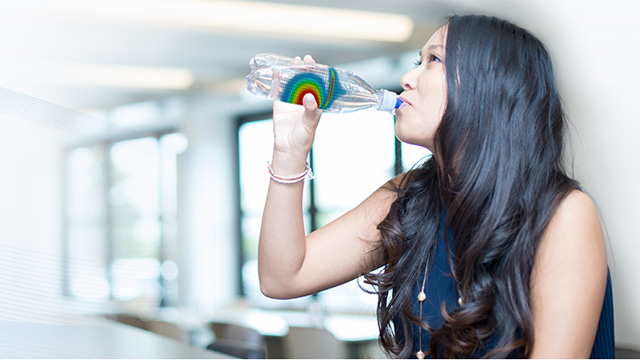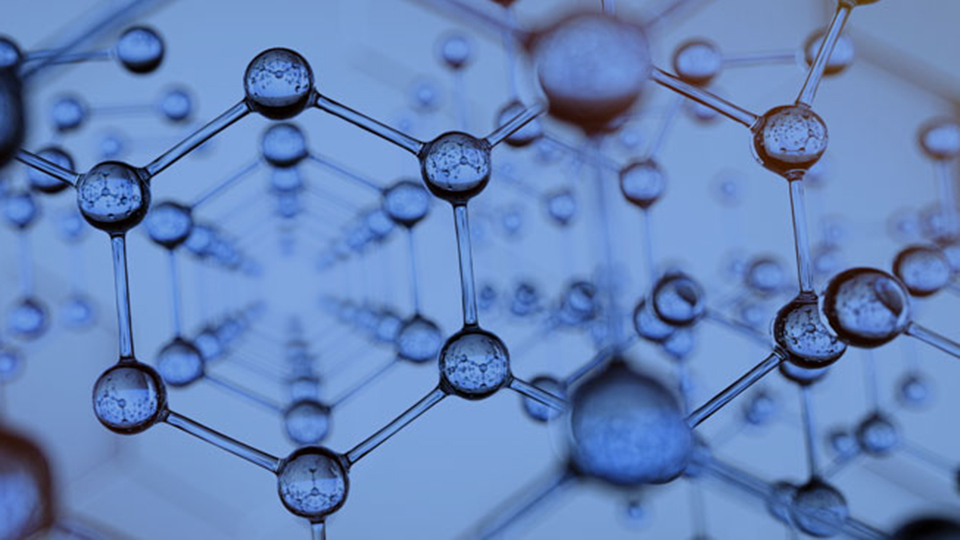Digital bottle designer as automated web application
High-Speed Bottle Design
Through simulation, Krones AG has successfully optimized the shape and wall thickness of PET bottles so that they are more stable and more durable without having to sacrifice individual designs. At the same time, a significant proportion of valuable plastic resources is saved. A win for the company and the environment.
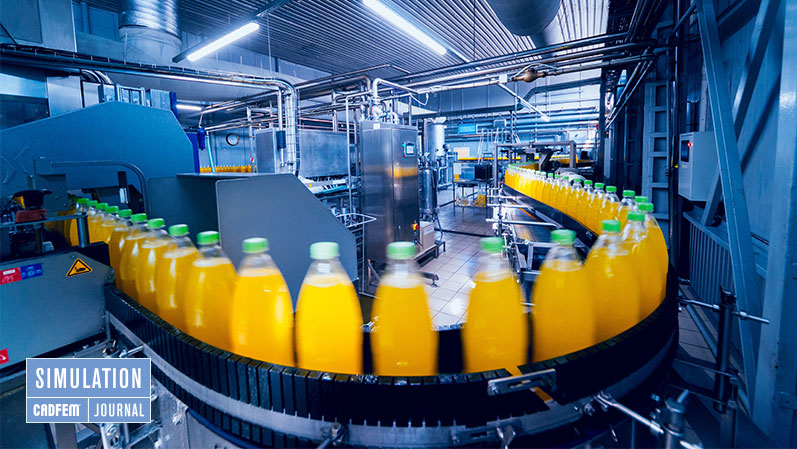
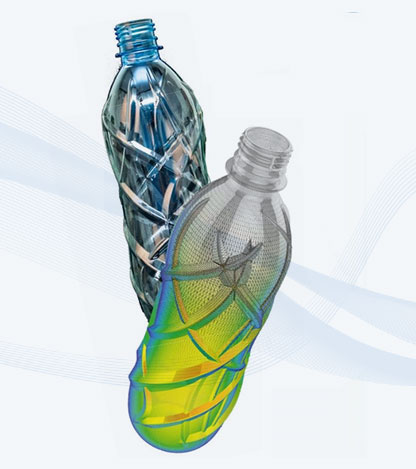
In line with Krones' slogan "We do more", those responsible at Krones are not satisfied with what has already been achieved. Together with CADFEM, an automation solution was developed that makes it possible to make complex FEM calculations accessible to a large group of users worldwide.
“Our goal was to significantly reduce blow molding tests by using a digital bottle designer,” explains Ulrich Lappe, Head of PET Pack Design and Application at Krones. “When part of the iteration loops in the laboratory are no longer necessary, we not only save money but also time, which we can use for additional orders. This is because the simulation results can be used to make fundamental optimizations to the container design even before a first blow mold is produced.”
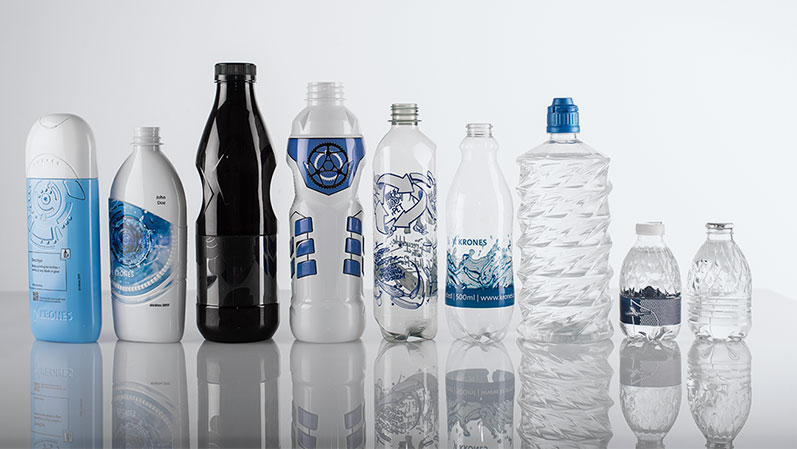
An integral part of the development
Simulation has been an integral part of product development at Krones for decades, both in new product development and in the further development and optimization of existing products. “However, the requirements have steadily increased, so that today we are on the way from physical to digital sampling”, explains Thomas Albrecht, who heads the CRD Analytics and Simulations department at Krones. “If we can predict the behavior of the bottle with simulations, we will be able to produce, fill and transport it faster, more sustainably and more efficiently.”
For this purpose, the entire life cycle of a bottle must be considered. Starting with the stretch blow molding process, the container must then pass through several machine components. During filling and labeling, the bottles are subjected to high pressures. They are also subjected to stresses during storage and transport of empty and filled bottles, which must be taken into account in the design. Ultimately, the feel and look of the bottle for the end customer is an equally important criterion for bottle design.
Ulrich Lappe, Head of PET Pack Design and ApplicationEach prototype that we have to build and test less because of simulation significantly reduces direct costs. One loop in the real prototype costs several thousand euros, and that doesn't include the revenue we miss out on by not being able to accept other orders due to time constraints.
Advising the customer as best as possible
“A PET bottle behaves differently from a glass bottle; in other words, not like a rigid body,” emphasizes Maximilian Braun, who oversees the automation project for the simulation process shown here. “A 0.5l disposable PET bottle weighs much less than a glass bottle of the same volume. Nevertheless, all requirements for stability or for the complete processing line must be met. That's why we also use simulation to compare bottle variants with each other. This way, we can be sure that we are giving our design teams and our customers the best possible advice. They not only get a good-looking container, but also a functionally flawless product.”
In order to further reduce the effort required for the simulations and make them easier to handle overall, Krones invited tenders for a project to standardize and automate the processes. “Of the three suppliers that took part in the tender, CADFEM particularly stood out,” reports Thomas Albrecht. “Based on the many years of cooperation and the preliminary analyses carried out, we were confident that, together with CADFEM, we would be able to obtain a tailor-made solution.”
The project with CADFEM - the FEM Bottle Wizard - included a system change to Ansys Workbench in order to design a fully automated FE process chain with preprocessing, calculation and postprocessing using ACT (Application Customization Toolkit). The standardization and automation of the simulation created an orderly flow of information, including a link to the SAP system. “We use the CAD model to specify which bottle is to be simulated,” explains Maximilian Braun. “Likewise, material data and the wall thickness distribution are defined. Then the load cases to be analyzed have to be specified as well as a commission or order number in the request form in order to start the automatism.”
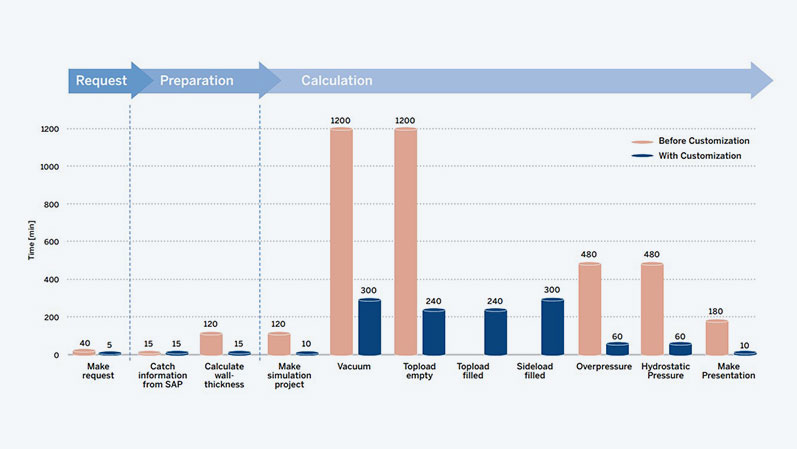
Thomas Albrecht, Head of CRD Analytics and SimulationsWe, the simulation experts at Krones, thought about the calculation methodology together with CADFEM and worked out a detailed concept for the application in the specialist department. This then served as the basis for automation, which CADFEM implemented as requested.
Standardization and automation
Six load cases have been implemented so far: top load empty and top load filled as stack load cases, Sideload-filled, hydrostatic pressure simulation, overpressure simulation and the vacuum simulation. These simulate the behavior on conveyor belts, in processing machines and the haptics for the end user. With the new Wizard, the requirements are defined in 5 minutes instead of the 40 minutes it used to take. It also takes just 10 minutes to set up a simulation project. The ease of use is based on the fact that the user is guided through the process using the structure tree. The speed results from the high degree of automation as well as from the calculations in the cluster.
In addition, the results are quickly available in the form of a standardized, automatically generated report. If all calculations are needed, they can now be performed within 24 hours, which used to take several days. With the provision of the Wizard, the number of bottle simulations performed has increased significantly because well-founded results are available quickly. In many cases, this happens within a few hours and not the next day or the day after.
Thomas Albrecht explains, “in 2019, we were able to carry out around 150 projects, each with several load cases and simulation runs. That was more than 700 calculations, a number that was previously unimaginable for us. However, it's not the number that counts, but rather the benefits that come from it. These include an improvement in our consulting expertise, the ease with which we can implement our customers’ design requirements, an acceleration of decision-making processes, and greater customer loyalty.”
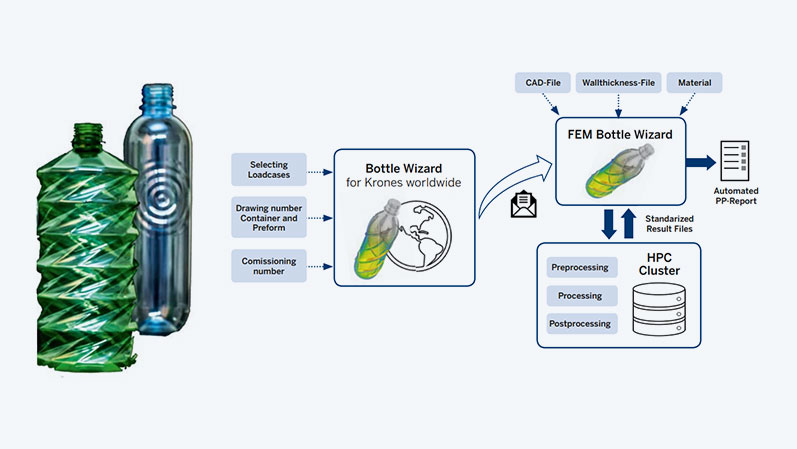
Martina Birk, Head of Sustainability, Krones AGThrough simulation, Krones AG has succeeded in optimizing the shape and wall thickness of PET bottles in such a way that they are more stable and last longer without having to forego individual designs. At the same time a significant amount of valuable plastic resources is saved. A benefit for the company and the environment.
Multiple benefits with Group-wide use
The Bottle Wizard can be used throughout the Group by initiating the calculations by employees in the individual branches or subsidiaries. So far, it has been used in Germany, the USA, China, Thailand and Dubai. “With the new Wizard solution, we have been able to expand the user base for simulations to include container designers worldwide,” reports Ulrich Lappe.
“There are now a lot of them. Particularly when you are faced with a problem, you can try out similar variants directly in order to solve it. Likewise, errors that occur or are detected late can be resolved more quickly. We have also found that simulation results make it easier for customers to understand why changes are necessary. Time-consuming sampling as verification is usually no longer necessary.”
Maximilian Braun, project supervisor of the digital bottle designerMy future dream for simulation would be a virtual lab report. This would become possible if all test procedures carried out in the laboratory could also be carried out as simulations. For this, we need even more precise models and must integrate further calculations into the digital bottle designer.
The Krones Group, headquartered in Neutraubling, Germany, plans, develops and manufactures machines and complete lines for process, filling and packaging technology. Information technology, factory planning, and numerous products from Krones' subsidiaries, such as intralogistics and valve production, round out Krones' product portfolio. www.krones.com
Would you like to learn more about this topic?

Krones AG
Maximilian Braun
Authors: Gerhard Friederici (CADFEM Germany)
Images: © Krones; CADFEM Germany GmbH 2019/2023
Published: March, 2023
Contact CADFEM
